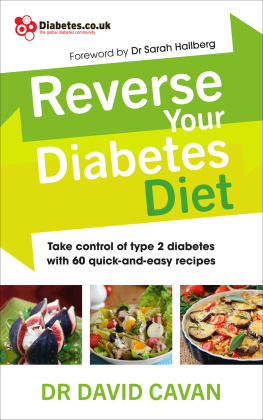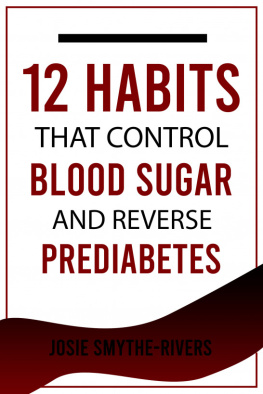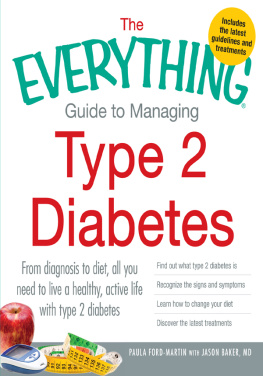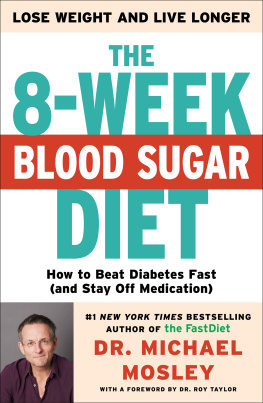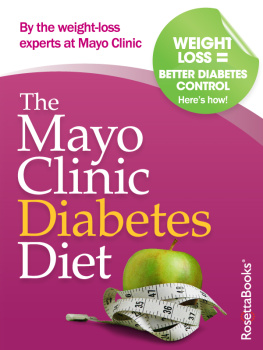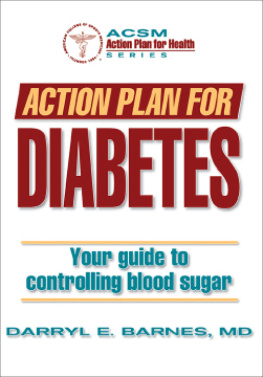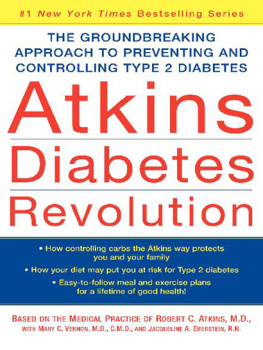Krause - Diet and Exercise for Managing Type 2 Diabetes: The Best Lifestyle Choice to Manage Blood Sugar
Here you can read online Krause - Diet and Exercise for Managing Type 2 Diabetes: The Best Lifestyle Choice to Manage Blood Sugar full text of the book (entire story) in english for free. Download pdf and epub, get meaning, cover and reviews about this ebook. year: 2015, genre: Home and family. Description of the work, (preface) as well as reviews are available. Best literature library LitArk.com created for fans of good reading and offers a wide selection of genres:
Romance novel
Science fiction
Adventure
Detective
Science
History
Home and family
Prose
Art
Politics
Computer
Non-fiction
Religion
Business
Children
Humor
Choose a favorite category and find really read worthwhile books. Enjoy immersion in the world of imagination, feel the emotions of the characters or learn something new for yourself, make an fascinating discovery.
- Book:Diet and Exercise for Managing Type 2 Diabetes: The Best Lifestyle Choice to Manage Blood Sugar
- Author:
- Genre:
- Year:2015
- Rating:5 / 5
- Favourites:Add to favourites
- Your mark:
- 100
- 1
- 2
- 3
- 4
- 5
Diet and Exercise for Managing Type 2 Diabetes: The Best Lifestyle Choice to Manage Blood Sugar: summary, description and annotation
We offer to read an annotation, description, summary or preface (depends on what the author of the book "Diet and Exercise for Managing Type 2 Diabetes: The Best Lifestyle Choice to Manage Blood Sugar" wrote himself). If you haven't found the necessary information about the book — write in the comments, we will try to find it.
Diet and Exercise for Managing Type 2 Diabetes: The Best Lifestyle Choice to Manage Blood Sugar — read online for free the complete book (whole text) full work
Below is the text of the book, divided by pages. System saving the place of the last page read, allows you to conveniently read the book "Diet and Exercise for Managing Type 2 Diabetes: The Best Lifestyle Choice to Manage Blood Sugar" online for free, without having to search again every time where you left off. Put a bookmark, and you can go to the page where you finished reading at any time.
Font size:
Interval:
Bookmark:

Table of Contents
Disclaimer: The information in this publication is for informational purposes only; it is not intended as medical advice. Diabetes is a serious disease. You should always seek professional advice from a medical expert for diabetes or any medical problems you are experiencing.

 What Is Diabetes
What Is DiabetesDiabetes Mellitus is a metabolic disease in which the body does not produce enough insulin or does not respond normally to the insulin produced those results in abnormal elevations of blood glucose.
People are most familiar with Type 2 diabetes, as this is the most common form and accounts for more than 90% of the 29.1 million diagnosed cases of diabetes, but there are actually a few different types.
Type 1 Diabetes
This form of diabetes occurs when the body does not produce enough insulin and is most commonly diagnosed in children and teenagers. It only accounts for 5% to 10% of all 29 million diabetes cases. While the number of people affected varies by region, it is estimated that 1 to 3 million people in the United States have Type 1 diabetes. While there is no way to prevent the disease, the effects of it can be controlled through insulin intake, which will be ongoing for the duration of the persons life. Researchers continue to study the development trends, effects, and treatments of Type 1 diabetes.
Prediabetes
Those who test with a range of 5.7% to 6.4% Hemoglobin A1C are considered to have prediabetes, any reading between 6.0% and 6.4% is considered at an especially high risk.
This is a threshold area and is an alert that there is a very high risk of type 2 diabetes onset in the future. Those with prediabetes can do a lot to prevent onset, including diet, exercise, weight loss as needed, and medication.
Type 2 Diabetes
This form of diabetes develops as the body begins to resist the insulin produced, which could eventually lead to a lack of insulin. Every time you eat, the body breaks down starches and sugars (carbohydrates) you consume and turns them into glucose. Glucose is the product that fuels the cells of the body. The Pancreas releases insulin, and insulin transports the glucose to the cells so it can be used as energy. In type 2 diabetes, insulin production is either lacking or insulin resistance occurs and glucose remains in the bloodstream, consequently the cells of the body can become energy-starved and eventually, the high glucose levels begin to affect the nerves, eyes, kidneys, and/or heart.
Type 2 diabetes accounts for 90% to 95% of all diabetes cases. Globally, the number has increased significantly in the last two decades, from 30 million cases in 1985 to 285 million in 2010. Obesity is thought to be a major cause of Type 2 diabetes, particularly for those whose genetics make them more susceptible to the disease. A healthy diet and regular exercise may control the disease, and various medications exist that can help control blood sugar. Type 2 diabetes is diagnosed with a standard blood test called Hemoglobin A1C.
Symptoms of type 2 diabetes can include heightened thirst and hunger as well as frequent urination, though often sufferers never experience symptoms. Experts believe that diabetes can largely be prevented by eating healthy, exercising regularly, and maintaining a normal body weight.
Gestational Diabetes
This form of diabetes occurs in pregnant women (with no previous diagnosis of diabetes) who develop high blood sugar, usually during the 3 rd trimester. Experts believe that it is due to the baby inadvertently interfering with insulin receptors. The symptoms are minor, and so it is typically diagnosed during regular pregnancy tests. About 10% of pregnancies result in this form of diabetes, and while it typically does not last after pregnancy, 5-10% of women who have gestational diabetes will develop Type 1 or 2 diabetes after giving birth (usually type 2).

 Type 2 Diabetes
Type 2 Diabetes Type 2 diabetes is the only form that can be reversed. Medications can help with this, but regular exercise (the more the better); weight loss as needed and a healthy diet are the foundation for managing the disease and possibly reversing it. Individuals who are obese have also found that bariatric surgery to remove excess weight is successful in reversing the disease.
Type 2 diabetes is the only form that can be reversed. Medications can help with this, but regular exercise (the more the better); weight loss as needed and a healthy diet are the foundation for managing the disease and possibly reversing it. Individuals who are obese have also found that bariatric surgery to remove excess weight is successful in reversing the disease.
- Diabetes was the 7th leading cause of death in 2010.
- People with diabetes have a two times risk of death from any cause as compared to those of the same age without the disease.
- 50% of diabetics die of heart disease and stroke.
- 71% of adults with diabetes also have hypertension.
- 44% of all kidney failures in 2011 were the result of diabetes.
- 60% of all non-traumatic amputations of lower limbs occur in people with diabetes due to nerve damage.
- 7,686 cases of diabetic retinopathy were diagnosed in 2010, and this number is up from 2,063 in the year 2000. Diabetic retinopathy is the leading cause of blindness in adults age 20 to 74.
- Diabetics are two times more likely to suffer from depression.
- Birth defects, large babies and other dangerous complications to the mother and baby can result from uncontrolled diabetes during pregnancy.

 Considerations For Managing Type 2 Diabetes
Considerations For Managing Type 2 DiabetesIf youve just gotten the diagnosis of type 2 diagnosis, you may be wondering whats nexthow do you manage such a complex disease? Certainly, your doctor may have prescribed or just recommended that you take a medication for your condition but it is important to remember that medication alone may not be enough to control your blood sugar level. You need to consider other options to help manage this condition.
 Weight Considerations
Weight Considerations
First, what is your weight? Weigh yourself and calculate your body mass index. Heres how its done. Your body mass index or BMI is your weight in pounds divided by your height in inches squared times 703. Ideally, the calculated number should be between 18 and 25. This is considered normal weight. Any number between 25 and 29.9 is considered as overweight and you need to consider losing that weight through diet and exercise. If the BMI is 30 or above, you are considered obese and you would seriously benefit from significant weight loss.
How do you go about losing weight? There are many fast fixes and super pills on the market that claim fast weight loss, but none has really been proven to be effective or to bring lasting results. You need to resort to old-fashioned diet and exercise forms of weight loss. Its really the only way that true long-lasting weight loss can happen.
Font size:
Interval:
Bookmark:
Similar books «Diet and Exercise for Managing Type 2 Diabetes: The Best Lifestyle Choice to Manage Blood Sugar»
Look at similar books to Diet and Exercise for Managing Type 2 Diabetes: The Best Lifestyle Choice to Manage Blood Sugar. We have selected literature similar in name and meaning in the hope of providing readers with more options to find new, interesting, not yet read works.
Discussion, reviews of the book Diet and Exercise for Managing Type 2 Diabetes: The Best Lifestyle Choice to Manage Blood Sugar and just readers' own opinions. Leave your comments, write what you think about the work, its meaning or the main characters. Specify what exactly you liked and what you didn't like, and why you think so.








